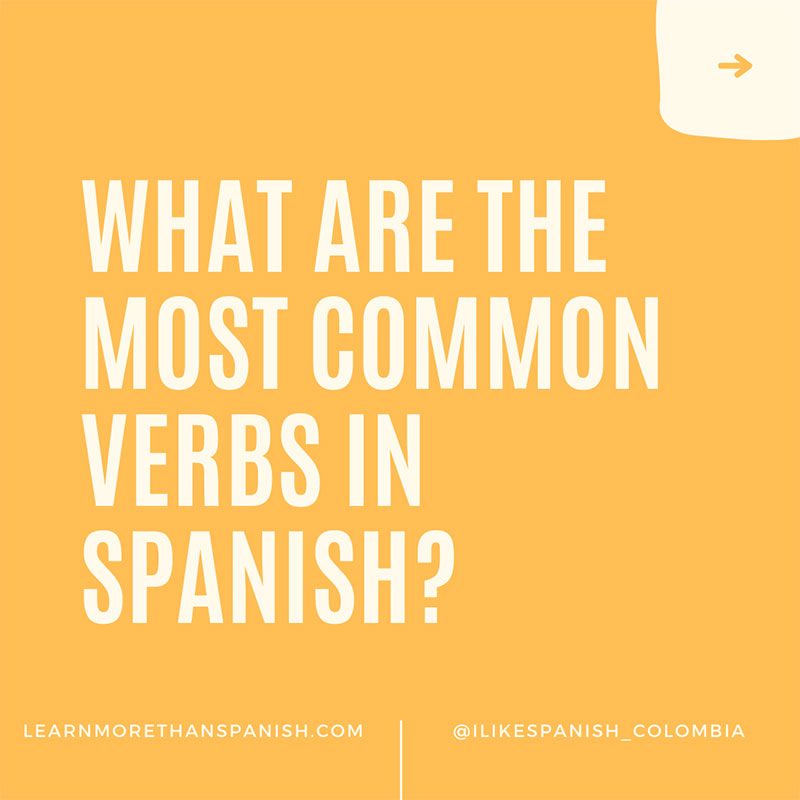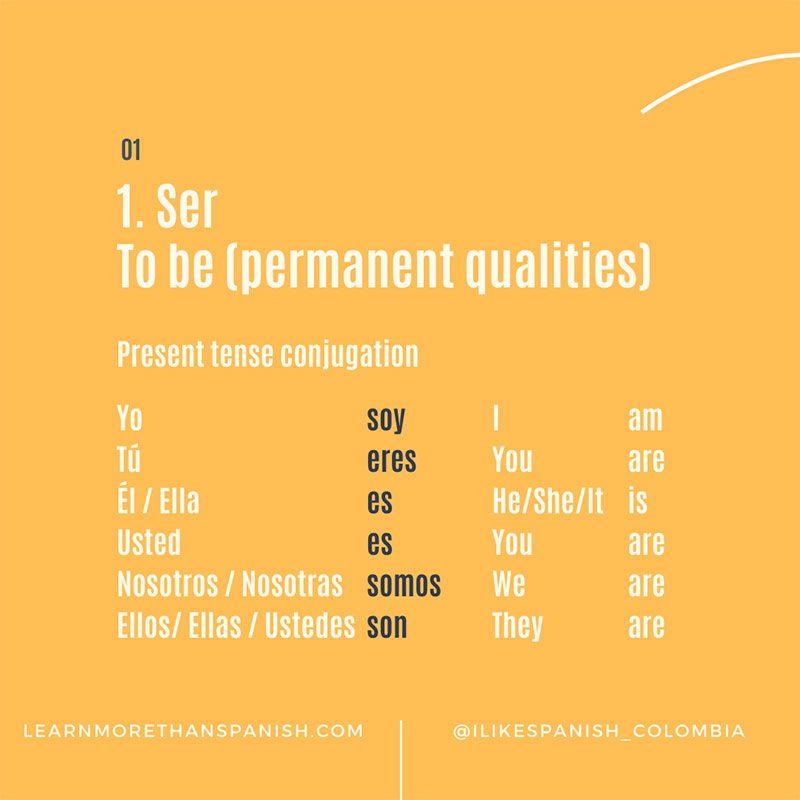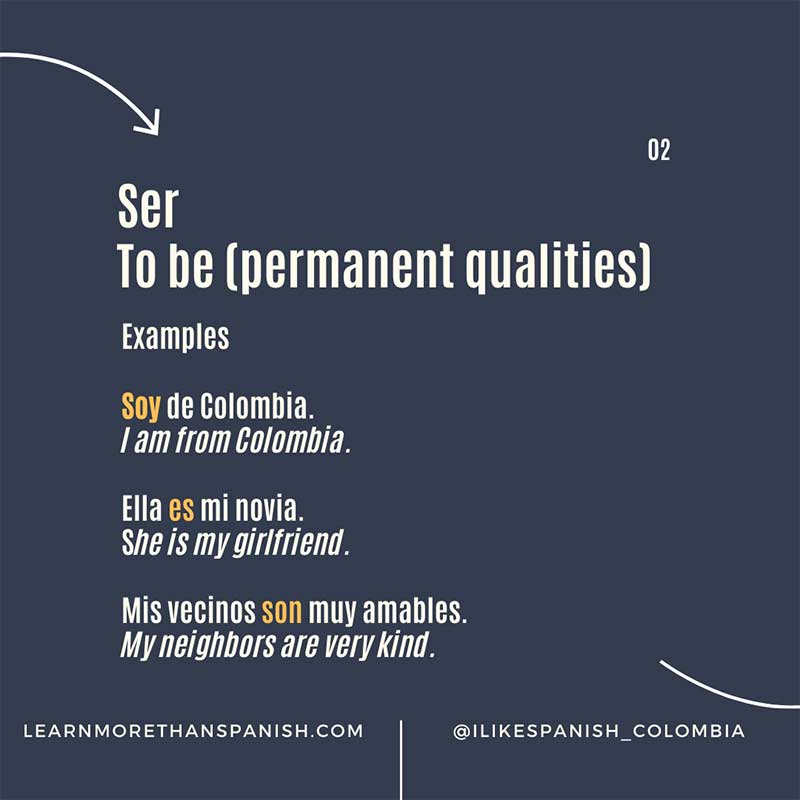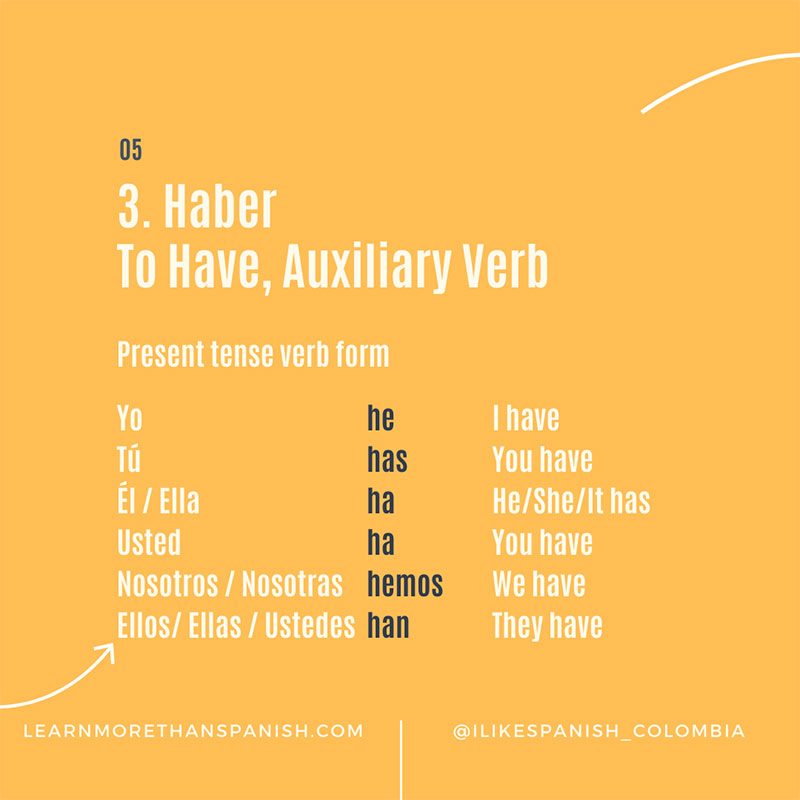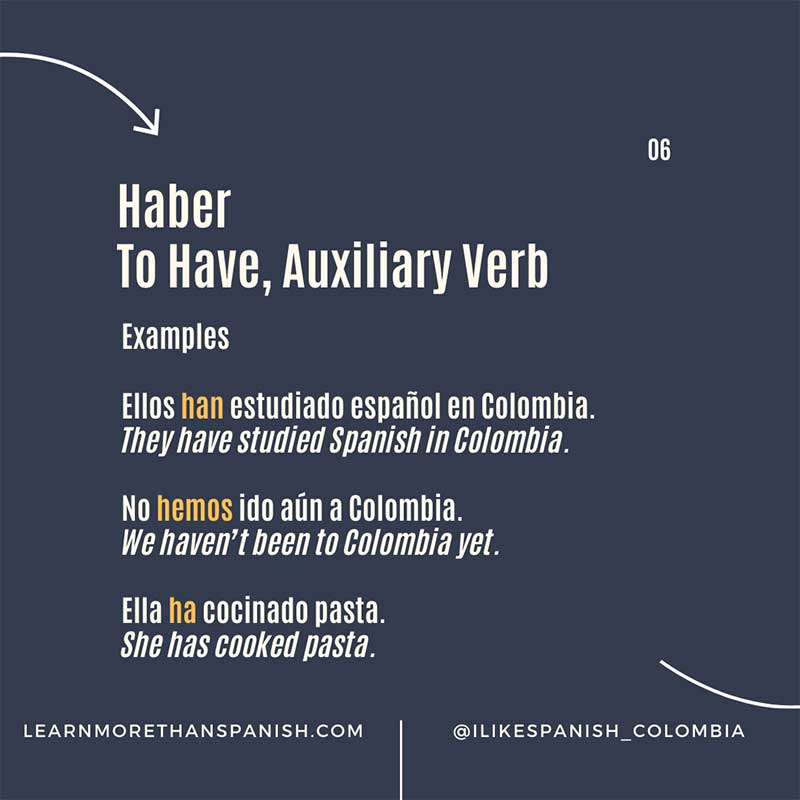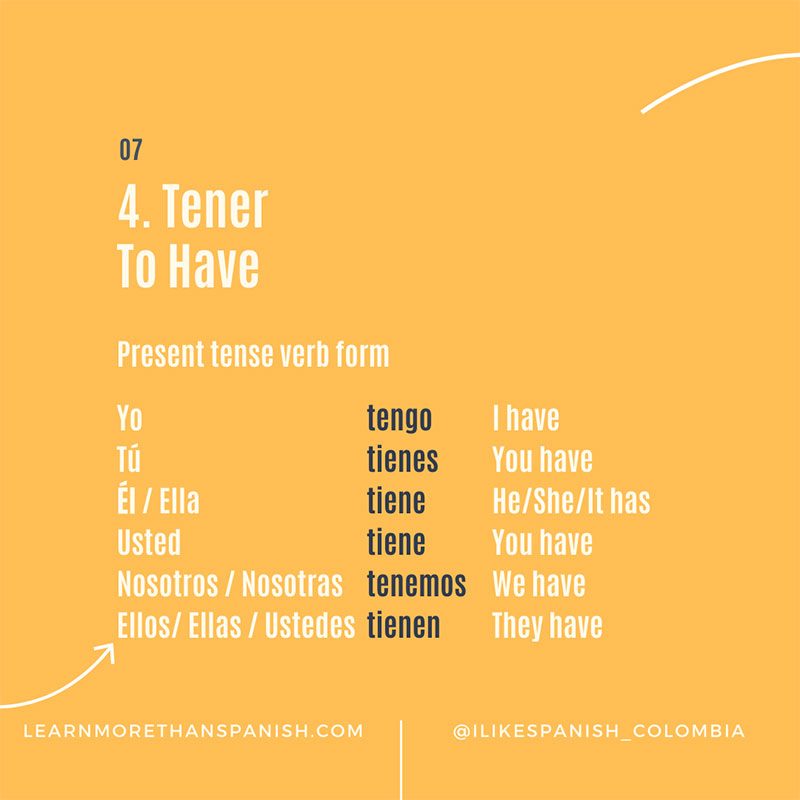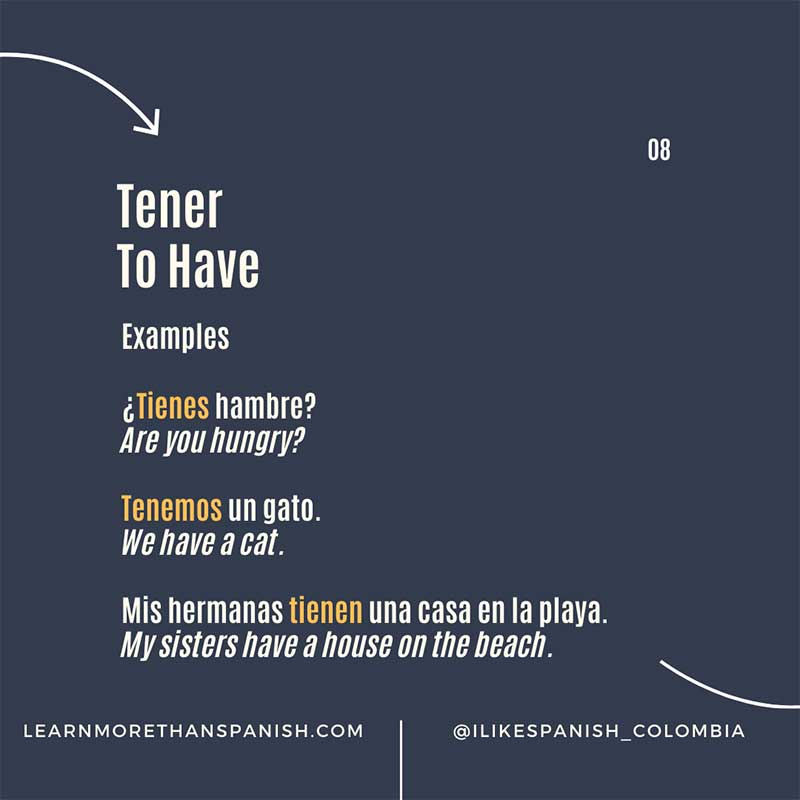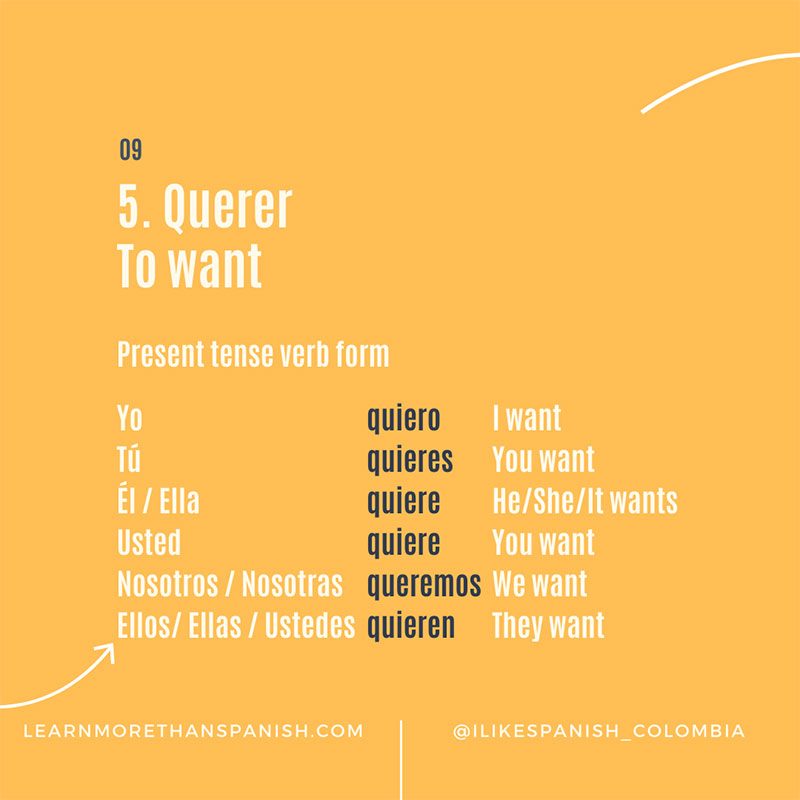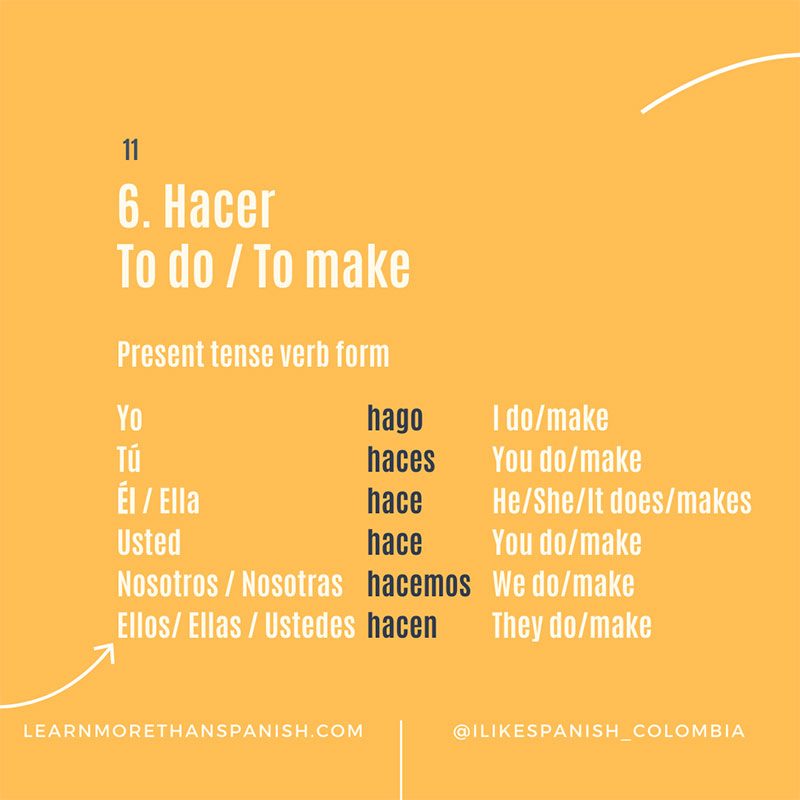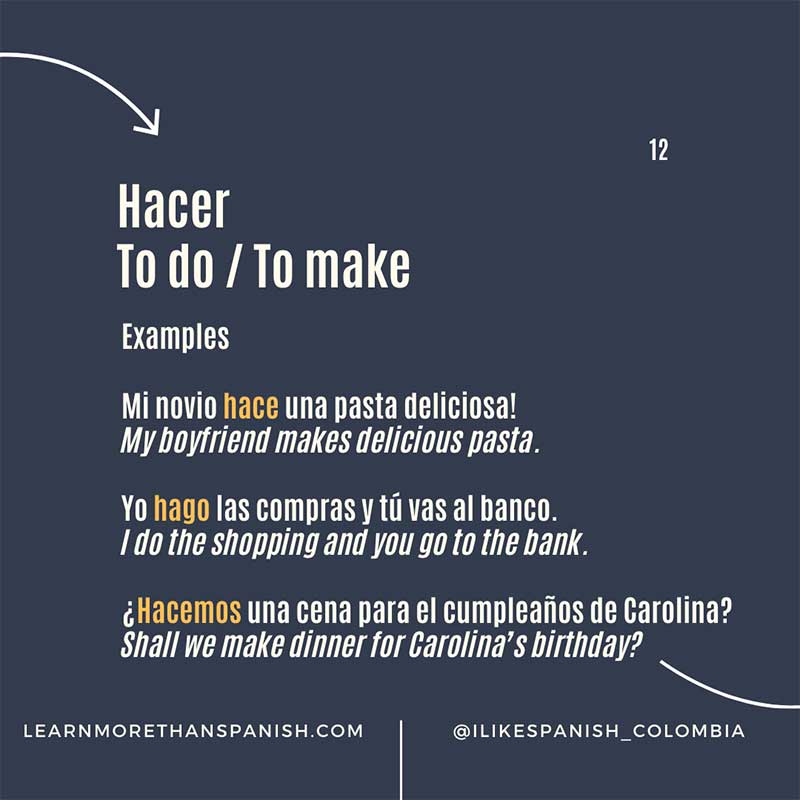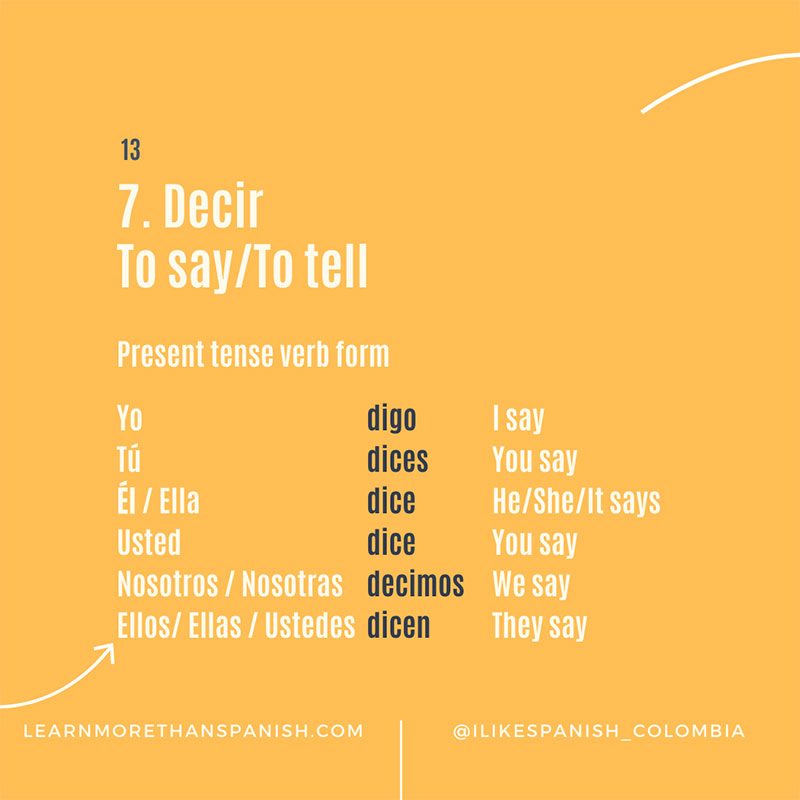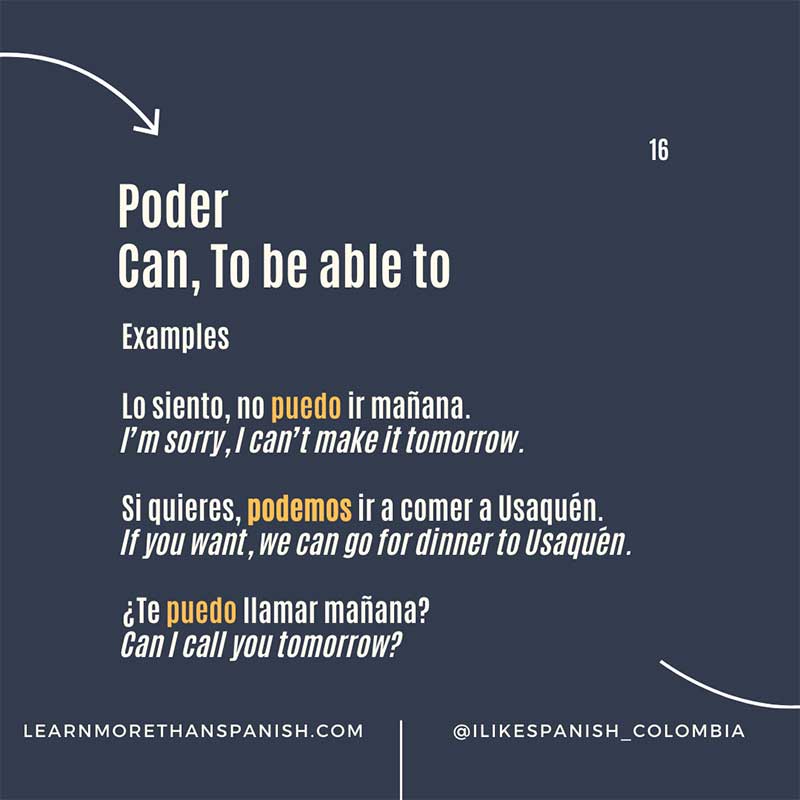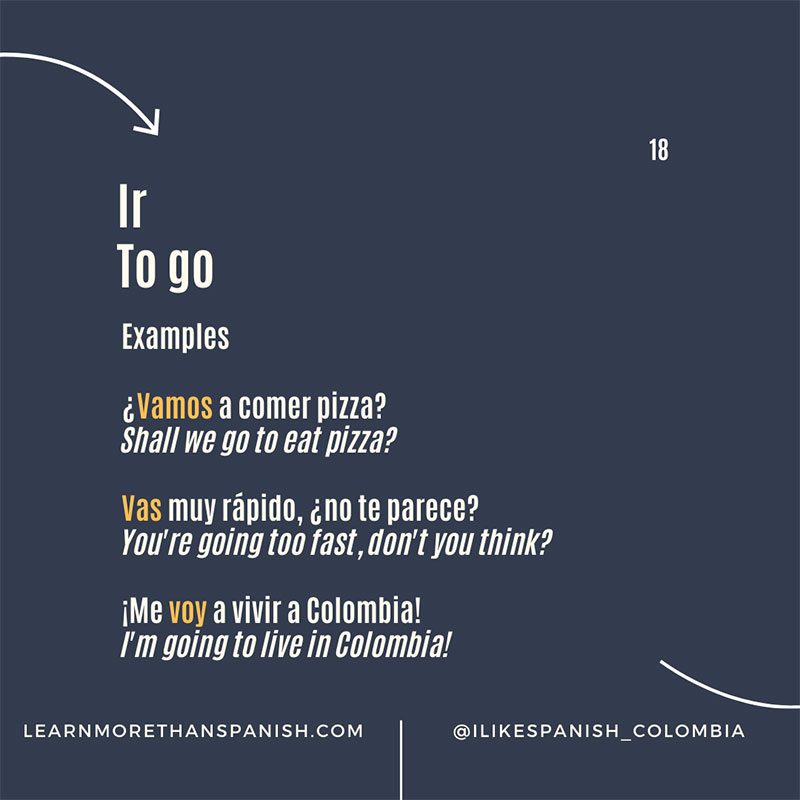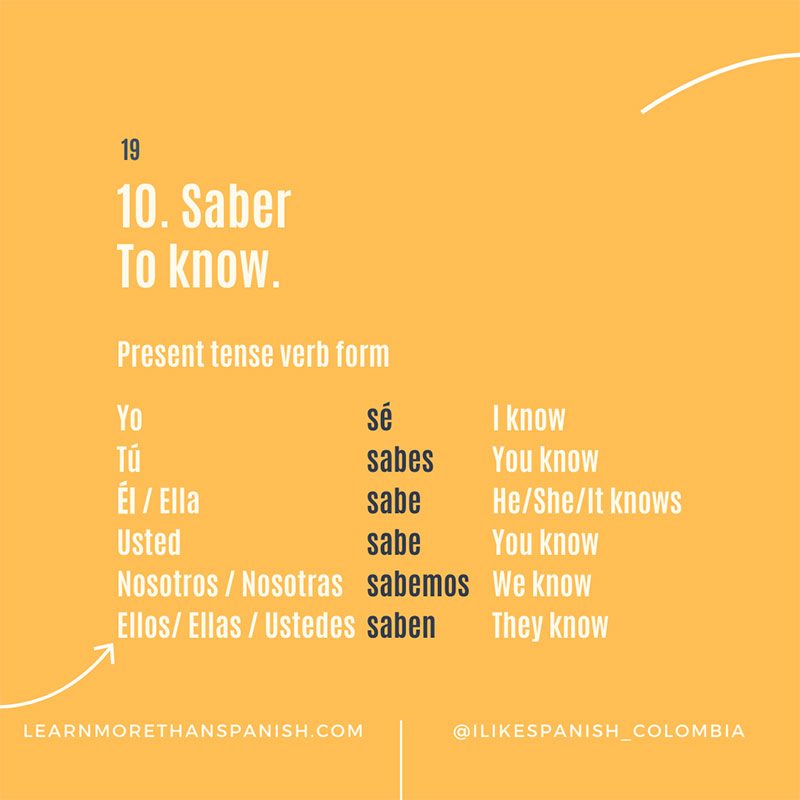10 most common Spanish verbs
Verbs are essential to express yourself in any language; almost every sentence requires a verb. They show an action (walk), occurrence (develop), or state of being (exist).
We know how difficult learning verbs and their conjugation might be in Spanish. That’s why today’s blog is about verbs.
Simple and very useful!
What are the most common verbs in Spanish?
Learn the following ten verbs for easy conversations in Spanish. They will help you to start making basic sentences and building conversations.
You can bookmark this handy guide or print the PDF copy for easy reference.
- Ser (To be)
- Estar (To be)
- Haber (To have)
- Tener (To have)
- Querer (To want)
- Hacer (To do, To make)
- Decir (To say, To tell)
- Poder (Can, to be able)
- Ir (To go)
- Saber (To know)
1. Verb “Ser” in Spanish
English translation: The verb “ser” in Spanish means “to be” in English and it’s generally used to describe people’s traits and to describe object characteristics.
Present tense conjugation: Here is the verb “ser” in the present tense.
| Spanish | English | ||
| Yo | soy | I | am |
| Tú | eres | You | are |
| Él / Ella | es | He/She/It | is |
| Usted | es | You | are |
| Nosotros / Nosotras | somos | We | are |
| Ellos/ Ellas / Ustedes | son | They | are |
Some examples:
Soy de Colombia.
I am from Colombia.Ella es mi novia.
She is my girlfriend.Mis vecinos son muy amables.
My neighbors are very kind.
2. Verb “Estar” in Spanish
English translation: The verb “estar” in Spanish means “to be” in English and describes a non-permanent state or condition; something that is likely to change or temporary qualities.
Present tense conjugation: Here is the verb “Estar” in the present tense.
| Spanish | English | ||
| Yo | estoy | I | Am |
| Tú | estás | You | Are |
| El/Ella | está | He/She/It | Is |
| Usted | está | You | Are |
| Nosotros Nosotras | estamos | We | Are |
| Ellos/Ellas / Ustedes | están | They | Are |
Some examples:
Estoy muy feliz hoy.
I’m so happy today.!El café está delicioso!
The coffee is delicious!Estamos en el restaurante de la esquina
We are at the restaurant on the corner.
How come these two verbs mean the same “To Be”?
Yes, we know it might be confusing for new Spanish language learners that we use two different verbs to refer to the verb “To Be”.
For more, visit: Mastering the Spanish Language: Verbs “Ser” and “Estar”
3. Verb “Haber” in Spanish
English translation: To Have, Auxiliary Verb
Present tense conjugation: Here is “Haber” in the present tense.
| Spanish | English | ||
| Yo | he | I | have |
| Tú | has | You | have |
| Él / Ella | ha | He/She/It | has |
| Usted | ha | You | have |
| Nosotros / Nosotras | hemos | We | have |
| Ellos/ Ellas / Ustedes | han | They | have |
Some examples:
Ellos han estudiado español en Colombia.
They have studied Spanish in Colombia.No hemos ido aún a Colombia.
We haven’t been to Colombia yet.Ella ha cocinado pasta.
She has cooked pasta.
4. Verb “Tener” in Spanish
English translation: To have.
In this context, “have” is no longer an auxiliary verb as the section above.
Present tense conjugation: Here is “Tener” in the present tense.
| Spanish | English | ||
| Yo | tengo | I | have |
| Tú | tienes | You | have |
| Él / Ella | tiene | He/She/It | has |
| Usted | tiene | You | have |
| Nosotros / Nosotras | tenemos | We | have |
| Ellos/ Ellas / Ustedes | tienen | They | have |
Some examples:
¿Tienes hambre?
Are you hungry?Tenemos un gato.
We have a cat.Mis hermanas tienen una casa en la playa
My sisters have a house on the beach.
5. Verb “Querer” in Spanish
English translation: To want.
Present tense conjugation
| Spanish | English | ||
| Yo | quiero | I | want |
| Tú | quieres | You | want |
| Él / Ella | quiere | He/She/It | wants |
| Usted | quiere | You | want |
| Nosotros / Nosotras | queremos | We | want |
| Ellos/ Ellas / Ustedes | quieren | They | want |
Some examples:
¿Quieres un helado?
Do you want ice cream?Mis papás quieren ir de vacaciones
My parents want to go on holidaysQuiero ir a Colombia
I want to go to Colombia
Note:
Commonly, “querer” expresses wants and desires, BUT when we are talking about feelings and relationships, “querer” is used to say “I love you”.
Te quiero mucho.
I love you so much.¿Me quieres?
Do you love me?
Learn the different levels of love, from “Te quiero” to “Te amo” in this article.
6. Verb “Hacer” in Spanish
English translation: The Spanish verb “hacer” translates both “to do” and “to make”.
Present tense conjugation
| Spanish | English | ||
| Yo | hago | I | do/make |
| Tú | haces | You | do/make |
| Él / Ella | hace | He/She/It | does/makes |
| Usted | hace | You | do/make |
| Nosotros / Nosotras | hacemos | We | do/make |
| Ellos/ Ellas / Ustedes | hacen | They | do/make |
Some examples:
Mi novio hace una pasta deliciosa!
My boyfriend makes delicious pasta.Yo hago las compras y tú vas al banco.
I do the shopping and you go to the bank.¿Hacemos una cena para el cumpleaños de Carolina?
Shall we make dinner for Carolina’s birthday?
7. Verb “Decir” in Spanish
English translation: To say, To tell
Present tense conjugation
| Spanish | English | ||
| Yo | digo | I | say |
| Tú | dices | You | say |
| Él / Ella | dice | He/She/It | says |
| Usted | dice | You | say |
| Nosotros / Nosotras | decimos | We | say |
| Ellos/ Ellas / Ustedes | dicen | They | say |
Some examples:
¿Cómo se dice “I’m hungry” en español?
How do you say “I’m hungry” in Spanish?Carlos dice muchas mentiras.
Carlos tells a lot of lies.En colombia no decimos “café” sino “tinto”
In Colombia we don’t say “coffee” but “tinto”
8. Verb “Poder” in Spanish
English translation: Can, To be able to.
Present tense conjugation
| Spanish | English | ||
| Yo | puedo | I | can |
| Tú | puedes | You | can |
| Él / Ella | puede | He/She/It | can |
| Usted | puede | You | can |
| Nosotros / Nosotras | podemos | We | can |
| Ellos/ Ellas / Ustedes | pueden | They | can |
Some examples:
Lo siento, no puedo ir mañana
I’m sorry, I can’t make it tomorrowSi quieres, podemos ir a comer a Usaquén
If you want, we can go for dinner to Usaquén¿Te puedo llamar mañana?
Can I call you tomorrow?
9. Verb “Ir” in Spanish
English translation: To go
Present tense conjugation
| Spanish | English | ||
| Yo | voy | I | go |
| Tú | vas | You | go |
| Él / Ella | va | He/She/It | goes |
| Usted | va | You | go |
| Nosotros / Nosotras | vamos | We | go |
| Ellos/ Ellas / Ustedes | van | They | go |
Some examples:
¿Vamos a comer pizza?
Shall we go to eat pizza?Vas muy rápido, ¿no te parece?
You’re going too fast, don’t you think?¡Me voy a vivir a Colombia!
I’m going to live in Colombia!
10. Verb “Saber” in Spanish
English translation: To know.
Present tense conjugation
| Spanish | English | ||
| Yo | sé | I | know |
| Tú | sabes | You | know |
| Él / Ella | sabe | He/She/It | knows |
| Usted | sabe | You | know |
| Nosotros / Nosotras | sabemos | We | know |
| Ellos/ Ellas / Ustedes | saben | They | know |
Some examples:
!No sé!
I don’t know!¡Ella sabe bailar muy bien!
She really knows how to dance!¿Sabes a qué hora sale el vuelo?
Do you know what time the flight is?
Grammar Tip!
As you can see in the examples, It is not always necessary to use the pronoun since the conjugation of the verb implies it. Although it is grammatically correct, it sounds redundant.
We say:
“¿Quieres tomar un café?” instead of “¿Tú quieres tomar un café?”
“Tengo hambre”, instead of “Yo tengo hambre.”
We hope you found this article helpful!
Feel free to schedule a class with us if you have any questions or want to continue practicing.
During class, you can ask your teacher when to use each verb, how to memorize them, and how to practice Spanish verb conjugations.
Don’t forget to follow our social media and read our blog to Learn more than Spanish.
We hope to see you in Colombia soon!


